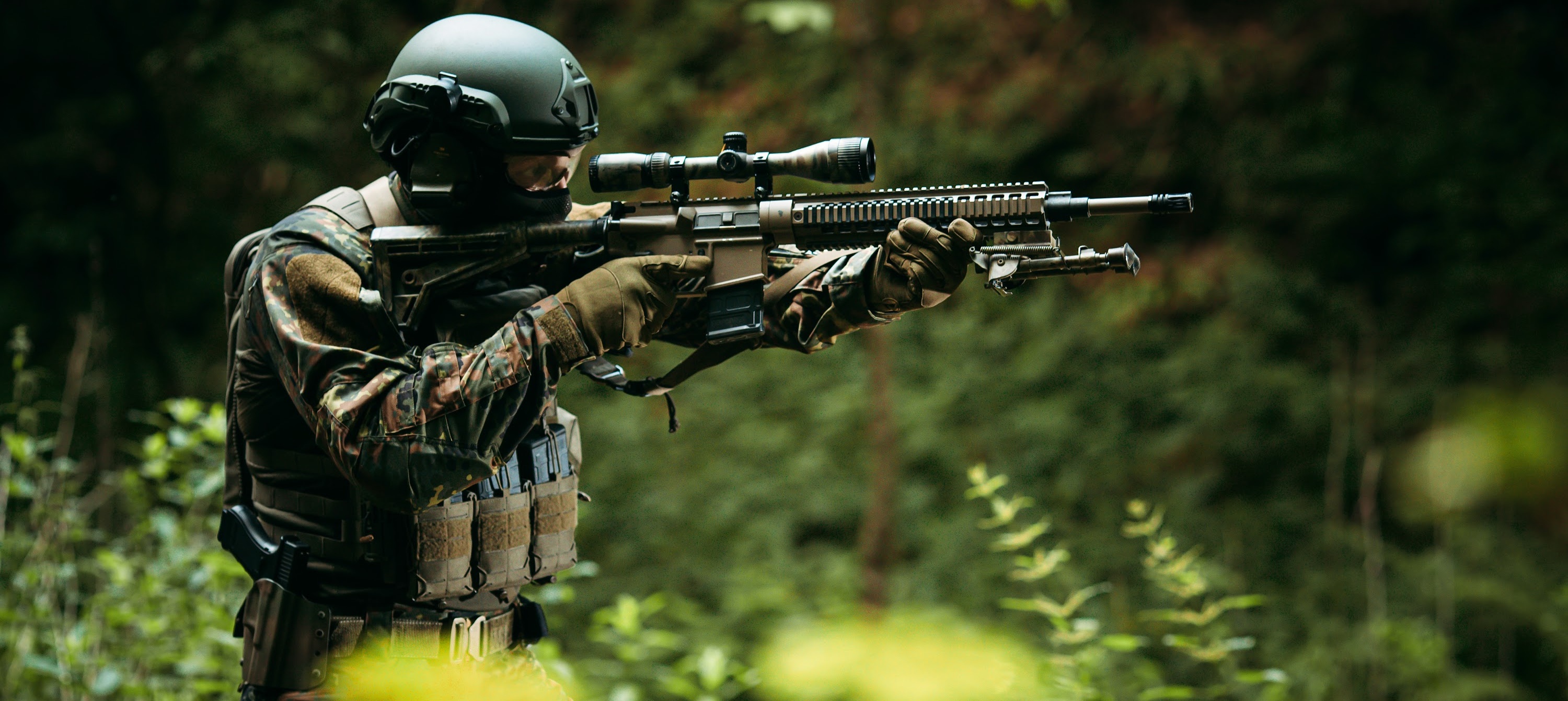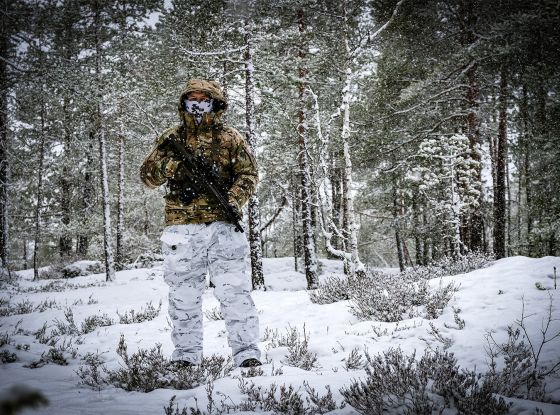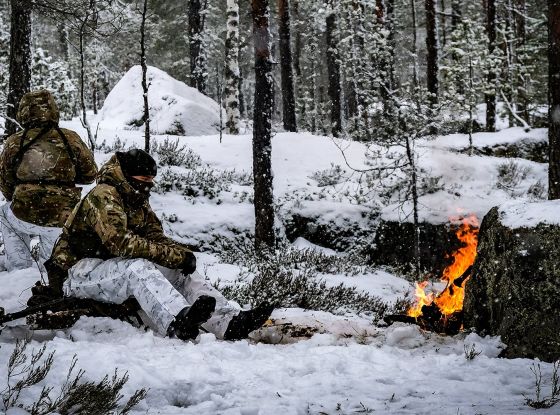Few military uniforms throughout history have ever been able to match the German uniform when it comes to distinctiveness—and prestigiousness. Beginning with the early days of the Prussian army and continuing to the present Federal Republic of Germany’s modern air-land-sea forces (Bundeswehr), the German military uniform has undergone numerous changes, each occurring in tandem with changes in the structure, functions, and capabilities of the German military itself.
In this blog post:
Introduction
In this blog post, we'll dive into the rich history and fascinating evolution of the German uniform, examining its transformation across key periods and conflicts of the last 300 years.
The development of the German uniform from then until now is best understood if we consider six distinct eras:
- Prussian Army (1701-1871)
- Imperial German Army (1871-1918)
- Reichswehr (1919-1935)
- Wehrmacht (1935-1945)
- Nationale Volksarmee (East Germany, 1949-1990)
- Bundeswehr (West and unified Germany, 1955-present)
Prussian Army (1701-1871)
The story of the German uniform begins with the Prussian Army, established in 1701 by Frederick I of Prussia. The uniforms of this era were primarily designed to be functional and instil discipline, but they also included elements that reflected the soldiers' rank and unit.
One of the most iconic features of the early Prussian uniform was the "Pickelhaube," a spiked helmet made of hardened leather or metal. The Pickelhaube was introduced in 1842 and would remain a symbol of the Prussian army for decades to come. The helmet was designed to deflect sword thrusts and provide an imposing appearance. The spike on top of the helmet—known as the "spike" or "tip"—varied in height and design depending on the rank and regiment of the wearer (a short spike for enlisted soldiers; a tall, ornate one for officers and generals).
The basic Prussian infantry uniform consisted of a dark blue coat (known as the "Waffenrock") with a standing collar, white trousers, and black boots. The Waffenrock was a double-breasted coat with two rows of brass buttons down the front, and a red collar and cuffs to denote infantry. The trousers were made of white cotton or linen for summer wear, while grey wool trousers were worn during the winter months.
Officers wore a similar uniform, but with more embellishments that included elaborate epaulets and braiding. The wearer’s service branch was indicated by the colour of the collar and cuffs (red for infantry, yellow for cavalry, and dark blue for artillery).
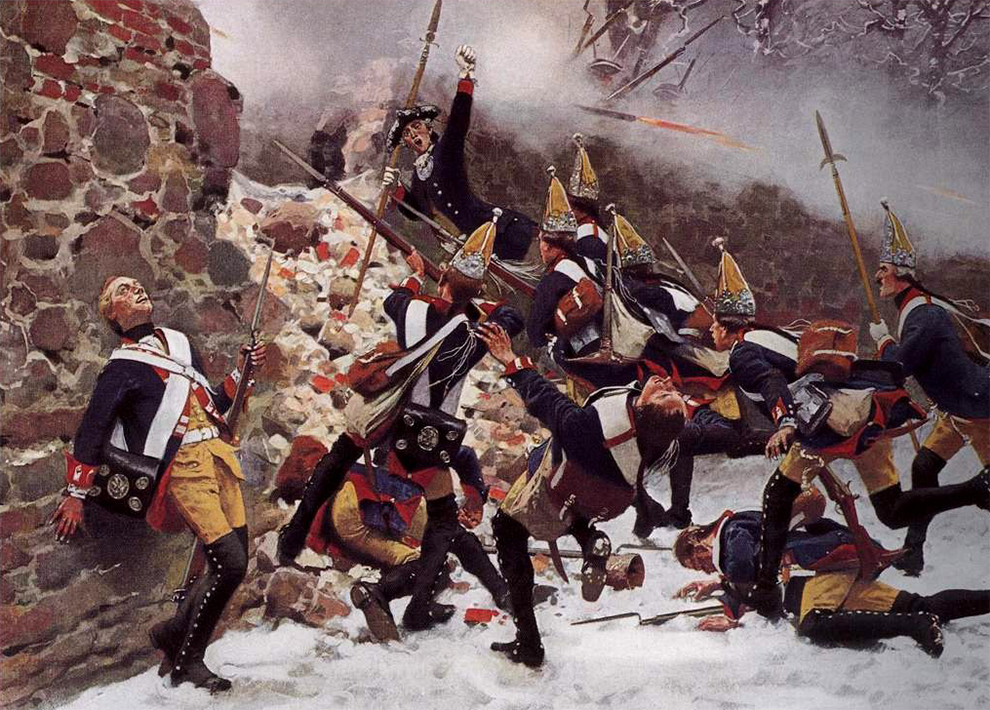
Source: Carl Röchling (1855–1920)
SUBSCRIBE TO UNLOCK OUR EXCLUSIVE CONTENT
Enter your email and get timely updates and relevant intel on tactical topics directly to your inbox.
You are signing up to receive updates via e-mail from which you can opt out at any time. Visit our privacy policy for more info.
Imperial German Army (1871-1918)
Prior to 1871, Germany was made up of numerous sovereign states and kingdoms, Prussia being one of them. In 1871, with Prussia taking the lead, those entities united into a single nation. Born of that unification was the Imperial German Army, of which the Prussian Army served as the backbone. Accordingly, the uniforms of this period were strongly influenced by Prussian traditions, with certain modifications to accommodate the needs of a modern army.
During the First World War, the German uniform underwent significant changes to adapt to the harsh realities of trench warfare. Gone was the Prussian era’s bright blue, replaced with a subdued field grey to make it harder for opposing forces to spot the wearer (by this time, advancements in weaponry meant less smoke on the battlefield—and less smoke meant soldiers attired in bright blue could no longer count of the fog of war obscuring or concealing them from enemy eyes.
Also altered was the design of the tunic. Designated the "M1915," the updated garment boasted a simpler design. It had fewer buttons and—in lieu of the traditional standing collar—a collar that turned down.
Discarded as well was the Pickelhaube in favour of the more practical "Stahlhelm" steel helmet, which provided better protection against shrapnel and bullets. Introduced in 1916, the distinctively shaped Stahlhelm consisted of a cylindrical dome with a slightly flattened top plus a visor and a flared neck-guard below the brim. The helmet was painted field grey to match the rest of the uniform, although some of these helmets were issued with a camouflaged cover.
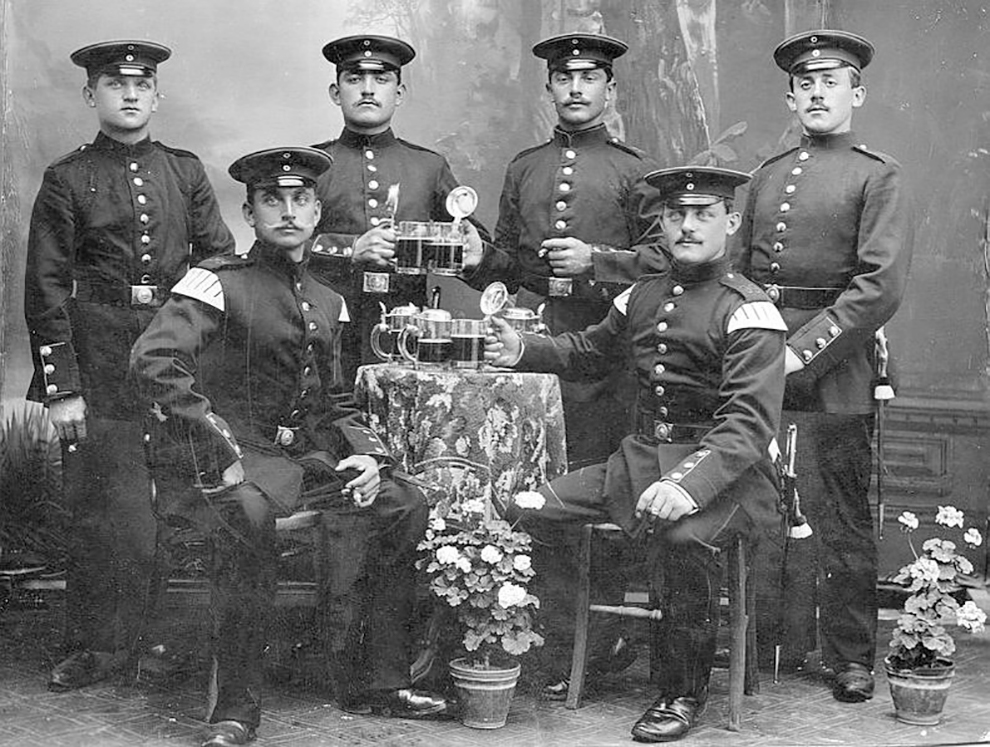
Reichswehr (1919-1935)
World War I hostilities ended in late 1918, but the conflict did not formally end until mid-1919 with the signing of the Treaty of Versailles. Under the terms of this settlement, Germany was compelled to drastically reduce the size of its military and greatly limit its martial capabilities. Thus, that same year, Germany established the Reichswehr, a force of but a mere 100,000 troops.
Uniforms of the Reichswehr retained many elements of the World War I version, including the Stahlhelm and field grey colouration. Missing, however, were the predecessor’s quality and stylistic flourishes (blame for that goes to the economic constraints of the post-Versailles years). For example,. the Reichswehr tunic employed a simple, cost-cutting, single-breasted, four-button design.
In an effort to boost morale and foster a sense of tradition and continuity, the Reichswehr reintroduced elements of the pre-war Prussian and Imperial German uniforms, such as the Pickelhaube for ceremonial occasions, and the reintroduction of collar tabs and shoulder boards for rank insignia.
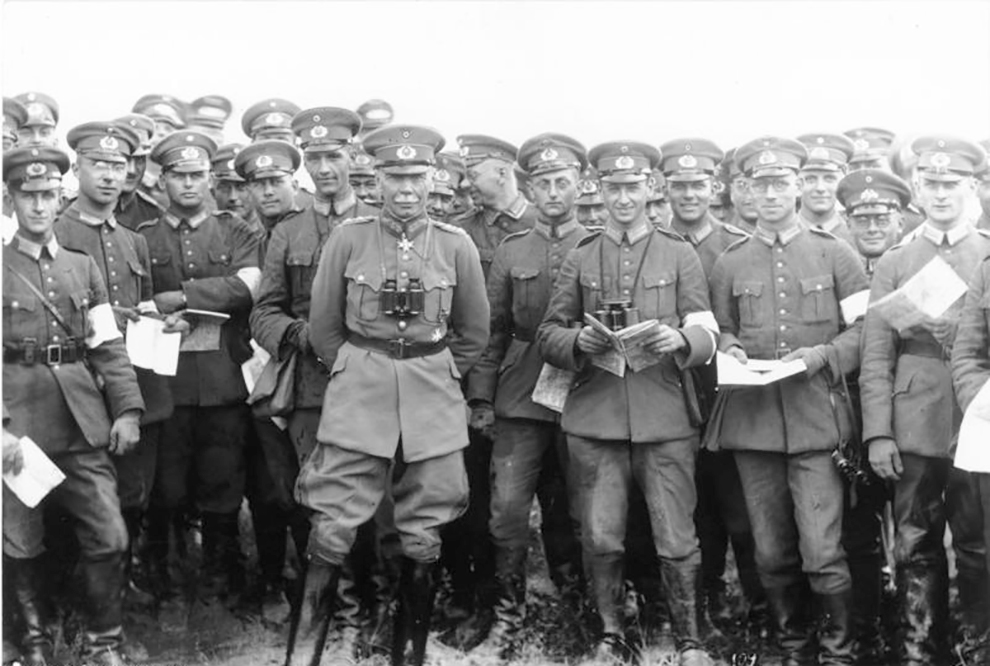
Source: Oscar Tellgmann (1857–1936)
Wehrmacht (1935-1945)
Then along came Adolf Hitler and the Nazi Party. In 1935, Hitler—at that time supreme leader of the resurgent nation—ordered a massive expansion and reorganisation of the German military, transforming it into one of history’s most fearsome fighting machines: the Wehrmacht. Uniforms of the Wehrmacht maintained the field grey colour and the Stahlhelm, but added features such as the iconic "jackboot" and the distinctive "eagle and swastika" insignia.
The Wehrmacht tunic, known as the "M1936," brought back the double-breasted design of earlier German uniforms and had a more tailored fit. It also featured six buttons and a standing collar. An accompanying belt bore a silver buckle engraved with the national emblem and the motto "Gott Mit Uns" (God With Us).
During World War II, the German uniform evolved to meet the demands of various theatres of battle and the climate conditions encountered within them. For example, a white camouflaged parka-and-pants set were developed expressly for the harsh winter conditions of the Eastern Front. For the hot, dry desert conditions of North Africa, German soldiers were issued open-collar uniforms made of lightweight materials; troops also had the option of wearing shorts a pith helmet, or the ubiquitous M40 EM Tropical Cap (Afrikamütze).
Amongst the most infamous German uniforms of this era was that worn by members of the Schutzstaffel (SS), a fanatical paramilitary organisation that began in 1925 as Hitler’s personal bodyguard and went on to become the political enforcers of the entire Nazi regime as well as an elite corps of battlefield warriors. Originally, the SS uniform differed from the Wehrmacht uniform—whereas the regular army wore field grey, the SS wore black, head to toe (although later the SS did adopt field grey). The collar tab on the right side of the SS tunic featured the organisation’s runic (a double “s” with each “s” in the shape of a lightning bolt), while the opposite collar tab presented the wearer’s rank (the SS utilised rank insignia unique to the SS). The high-fronted visor cap worn by officers displayed a "Death's Head" skull-and-crossbones insignia on a black band, above which was pinned the “eagle and swastika” emblem. The SS also produced a variety of specialty uniforms for its different branches and units.
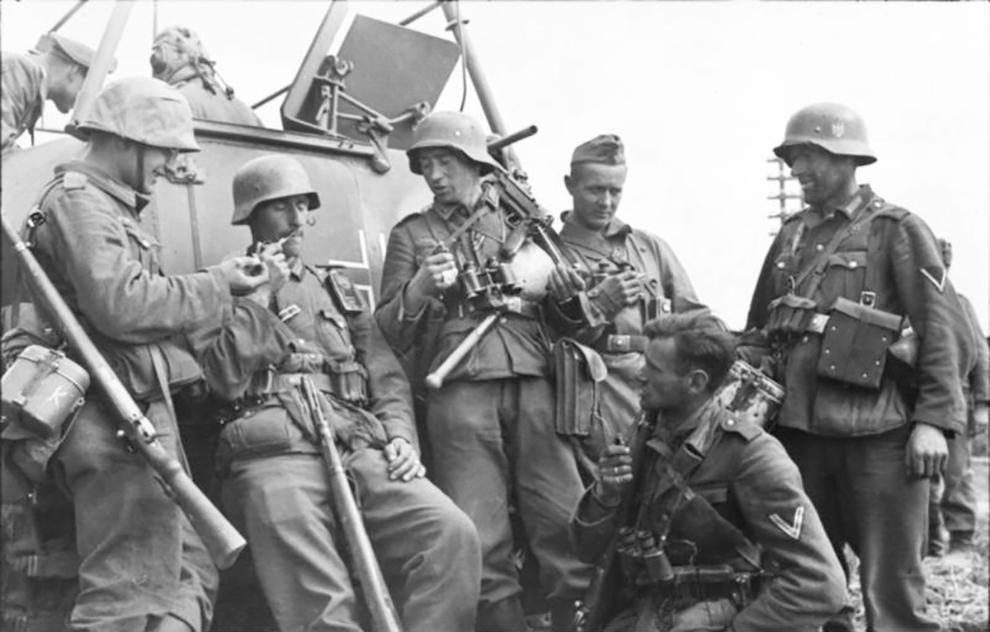
Source: www.histomil.com
Nationale Volksarmee (East Germany, 1949-1990)
After World War II, Germany was split into two nations: the Federal Republic of Germany (West Germany) and the German Democratic Republic (East Germany). In 1949, the GDR—tied to the Soviet Union—established the Nationale Volksarmee (NVA). The NVA uniform was heavily influenced by Soviet military uniforms of the time, featuring a grey-green tunic, matching trousers, and a peaked cap with a red band.
Nonetheless, the NVA uniform underwent an evolution, gradually adopting elements of the Wehrmacht uniform and features of other traditional German uniforms (such as collar tabs and shoulder boards). However, the overall appearance of the NVA uniform remained distinct from that of West Germany and, later, that of reunified Germany. The NVA uniform also included a unique emblem—a hammer and compass surrounded by a wreath—worn on the cap and other parts of the uniform.
In addition to the standard NVA uniform, there were also specialty uniforms featuring unique insignia and colour schemes to represent different branches, such as the Border Troops, Air Force, and Navy.
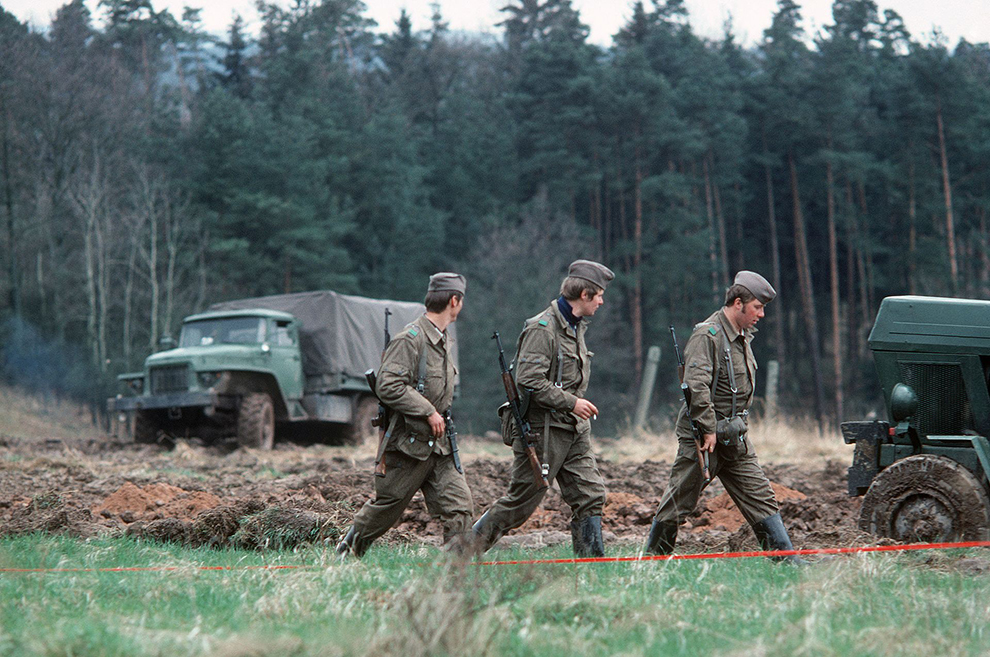
Source: German Federal Archive
Bundeswehr (West and unified Germany, 1955-present)
The Bundeswehr was established in 1955 as the military force of West Germany. In 1990, it also became the military force of East Germany when the two nations were e reunified. The Bundeswehr uniform has undergone a number of changes over the years, each reflecting the changing requirements of a modern army.
The current German uniform features a camouflage pattern known as "Flecktarn", which consists of small, fleck-like shapes in various shades of green, brown, and black. The uniform—utilising modern materials and features such as Velcro patches for affixing rank and unit insignia—is designed for functionality. Introduced in the 1990s, the Flecktarn pattern superseded the olive-green colour scheme of earlier Bundeswehr uniforms and has in fact proved to be so thoroughly associated with that organisation that today it is all but impossible to see this particular camouflage formulation and not think of Germany.
In addition to the standard field uniform, there are also formal Bundeswehr dress uniforms reflecting the traditions of long-ago Prussian and Imperial German Army garments with their peaked caps, high collars, and decorative braiding. The dress uniform consist of a dark-blue tunic and trousers, with a white shirt and black tie. The tunic’s gold-coloured buttons, piping, and shoulder boards proclaim the rank of the wearer.
As was true of the NVA, the Bundeswehr attires its specialty branches and units, such as the KSK (Special Forces Command) and the Gebirgsjäger (Mountain Troops) with their own uniquely styled uniforms and insignia.
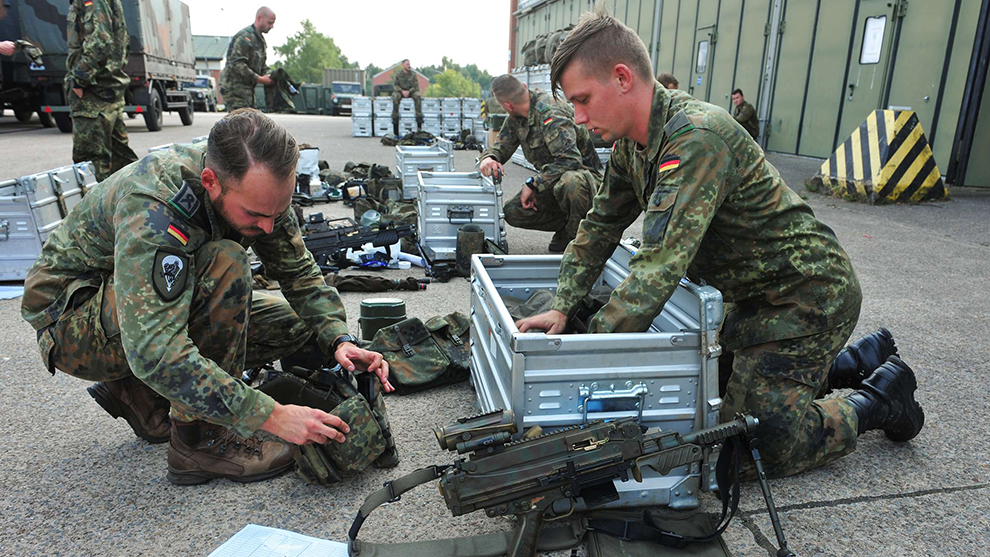
Source: www.bundeswehr.de
Flecktarn Camouflage
At UF PRO we employ the Flecktarn camouflage pattern for our products, attesting to the pattern's effectiveness and versatility. Originating from the German Army, the Bundeswehr, Flecktarn has become one of Europe’s most recognized concealment systems.
The Flecktarn pattern is characterized by its unique use of spots in five colours: black, reddish-brown, dark olive, medium olive green, and moss green. This design eliminates hard boundaries between the colours, allowing for effective concealment in temperate woodland environments, the pattern's darker spots blend seamlessly with the minimal sunlight filtering through the thick canopy, providing excellent concealment. The pattern is produced through a process called 'dithering', which creates a randomized, non-repetitive array of colours, and also aids in excellent near-IR signature masking.
The effectiveness of Flecktarn is demonstrated by its continued use by the German Bundeswehr. Especially in Europe's dense woodlands.
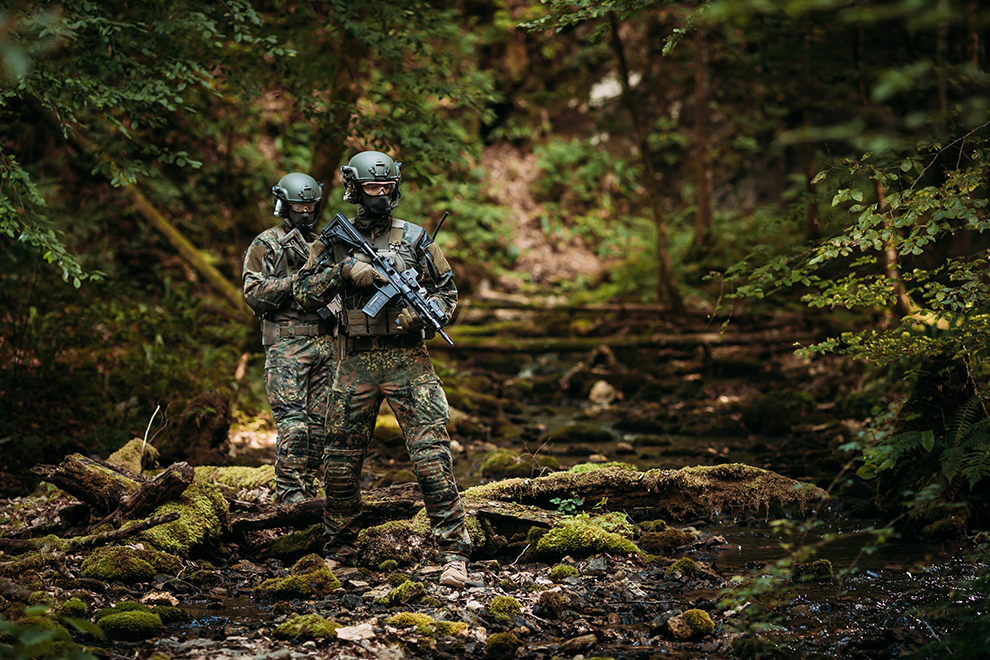
Conclusion
The evolution of the German uniform over the last 300 years is a fascinating reflection of the country's military history and changing priorities. From the ornate and disciplined Prussian uniforms to the modern, functional Bundeswehr attire, the German uniform was and is an enduring symbol of strength, discipline, and adaptability. There is scant doubt that the needs of the German military will continue to evolve, so it is highly probable that the German uniform will do so as well. What won’t change, however, is the unique and storied legacy surrounding the German military uniform. By examining these uniforms, we gain a deeper understanding of the broader historical context and the challenges faced by soldiers throughout the centuries.

